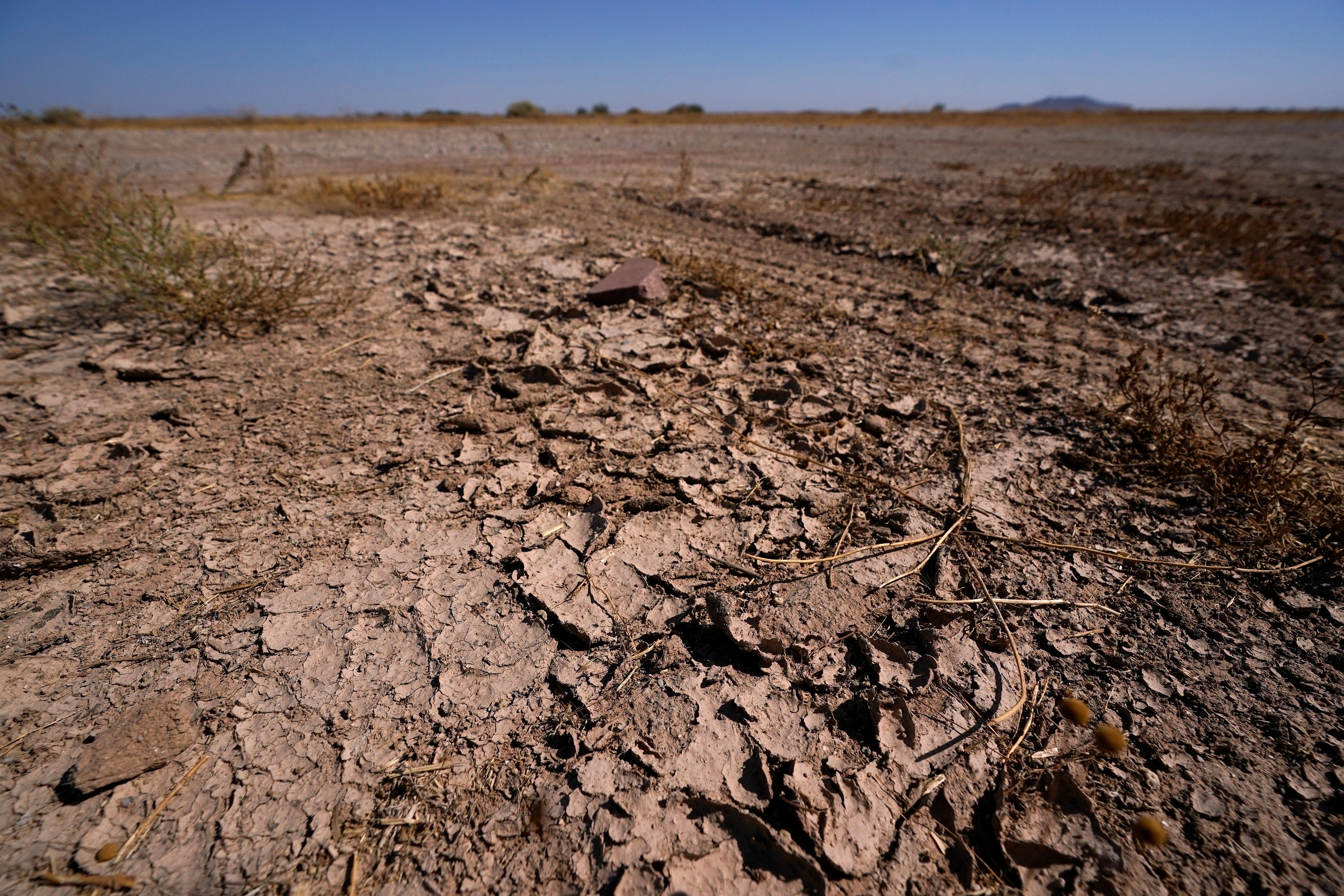Forecasters: Drought more likely than blizzards this winter
U.S. weather officials are predicting a mostly warmer than normal winter, but they are also worried about a worsening drought

Your support helps us to tell the story
From reproductive rights to climate change to Big Tech, The Independent is on the ground when the story is developing. Whether it's investigating the financials of Elon Musk's pro-Trump PAC or producing our latest documentary, 'The A Word', which shines a light on the American women fighting for reproductive rights, we know how important it is to parse out the facts from the messaging.
At such a critical moment in US history, we need reporters on the ground. Your donation allows us to keep sending journalists to speak to both sides of the story.
The Independent is trusted by Americans across the entire political spectrum. And unlike many other quality news outlets, we choose not to lock Americans out of our reporting and analysis with paywalls. We believe quality journalism should be available to everyone, paid for by those who can afford it.
Your support makes all the difference.Don’t expect much of a winter wallop this year, except for the pain of worsening drought, U.S. government forecasters said Thursday.
Two-thirds of the United States should get a warmer than normal winter, the National Oceanic and Atmospheric Administration predicted. Only Washington, northern Idaho, Montana, the Dakotas and northwestern Minnesota, will get a colder than normal winter, forecasters said.
The forecast for winter rain and snow splits the nation in three stripes. NOAA sees the entire south from southern California to North Carolina getting a dry winter. Forecasters see wetter weather for the northernmost states: Oregon and Washington to Michigan and dipping down to Illinois, Indiana, Ohio and other parts of the Ohio Valley. The rest of the nation will likely be closer to normal, NOAA said.
For the already dry Southwest and areas across the South, this could be a “big punch,” said NOAA drought expert David Miskus. About 45% of the nation is in drought, the highest level in more than seven years.
Mike Halpert, deputy director of NOAA’s Climate Prediction Center, said he doesn’t see much relief for central and southern California, where wildfires have been raging.
What’s driving the mostly warmer and drier winter forecast is La Nina, the cooling of parts of the central Pacific that alter weather patterns worldwide, Halpert said.
For the East, big snowstorms or blizzards aren’t usually associated with La Nina. That’s more likely with its warming ocean counterpart, El Nino, he said. But he added that extreme events are not something meteorologists can see in seasonal forecasts.
Halpert also said he doesn't expect the dreaded polar vortex to be much of a factor this year, except maybe in the Northern Plains and Great Lakes.
The vortex is the gigantic circular upper-air pattern that pens the cold close to the North Pole. When it weakens, the cold wanders away from the pole and brings bone-chilling weather to northern and eastern parts of the U.S.
While Halpert doesn’t see that happening much this winter, an expert in the polar vortex does.
Judah Cohen, a winter weather specialist for the private firm Atmospheric Environmental Research, sees a harsher winter for the Northeast than NOAA does. He bases much of his forecasting on what’s been happening in the Arctic and Siberian snow cover in October. His research shows that the more snow on the ground in Siberia in October, the harsher the winter in the eastern United States as the polar vortex weakens and wanders south.
Snow cover in Siberia was low in early October, but it is catching up fast and looks to be heavier than normal by the end of the month, he said.
The government predictions are about increased or decreased odds in what the entire three months of weather look like, not an individual day or storm, so don’t plan any event on a seasonal outlook, cautioned Greg Postel, a storm specialist at The Weather Channel. But he said La Nina is the strongest indicator among several for what drives winter weather. La Nina does bring a milder than average winter to the southeast, but it also makes the central U.S. “susceptible to Arctic blasts,” he said.
La Nina also dominates the forecast by AccuWeather. That private company is forecasting mainly dry in the South, wet and snowy in the Pacific Northwest, bouts of snow and rain from Minneapolis through the Great Lakes region, big swings in the heartland and mild weather in the mid-Atlantic. The company predicts a few heavy snow events in the Midwest and Great Lakes, but less than average snow for the Northeast.
___
Follow Seth Borenstein on Twitter at @borenbears .
___
The Associated Press Health and Science Department receives support from the Howard Hughes Medical Institute’s Department of Science Education. The AP is solely responsible for all content.